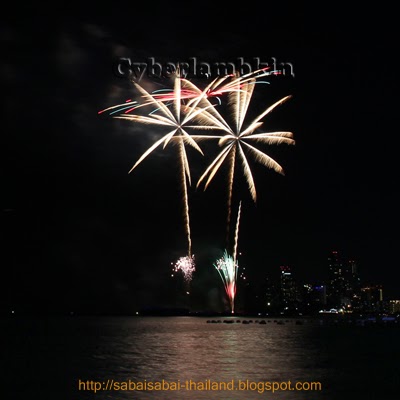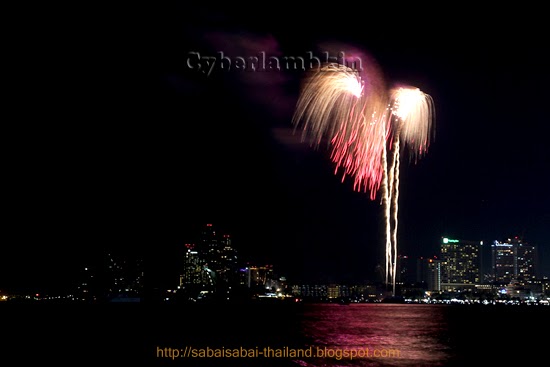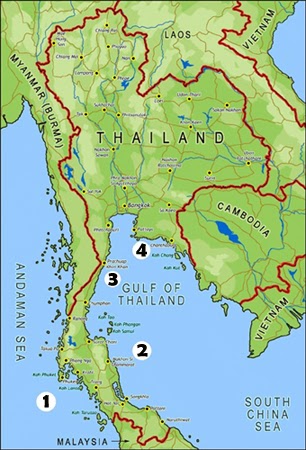The first thing I usually do when I start planning an overseas trip to any country is to check the best season for traveling to that particular country. (Of course, in case I come across some very inexpensive promotion ticket, I won’t care what kind of weather I will be facing when I get there.) I’m sure nobody wants to waste money and time to travel across the world just to look at downpours through the hotel windows, right? So, let’s see when would be the best season to come or to avoid if you plan to travel to Thailand.
Thailand is situated in Southeast Asia and the overall temperature is hot and humid. It has a tropical monsoon climate with an average temperature of 27°C/81°F. So, if you don’t like sweltering weather with high humidity which makes you feel sticky all the time you should avoid coming to Thailand during the period from August to mid October as this is the middle of the rainy season. Thailand’s rainy season is characterized by its overcast skies and continuous heavy downpours which sometimes last many hours each day and cause floods, or the rain may fall on and off throughout the day. (Thailand’s rainy season starts from mid May and ends around mid October although there may be some rainfalls already at the beginning of May). This is due to the influence of southwest monsoon winds which blow moist air from the Indian Ocean. Apart from the rainy season, there is only the midst of the summertime which may also be a problem for tourists who come from countries with cold climates because Thailand’s summer which begins in mid February and continues until mid May usually has an average temperature of 35°C/95°F which may rise up to 40°C/104°F during March or April, while at the end of summer starting beginning of May there may be short spurts of heavy rains lasting 1-2 hours together with flash-floods, but as soon as the rain stops the weather will be bright and sunny again as usual.
However, if you don’t mind the rain (being well equipped with umbrella and raincoat!!!) and are not afraid of the heat, you may travel in Thailand all year round. But which season is most suitable?? Well, the cool season seems to be most popular with tourists and this season covers the period from the end of October through to mid February or beginning of March. (I don’t think we can actually call this season winter because the weather in Thailand is not cold enough to justify the name.) The cool season temperatures range from approximately 20-30°C/60-86°F due to the influence of northeast monsoon winds which blow in the coolness and the drought from Mongolia and China, resulting in a very short 3-5 days’ cool spell at the end of December in some years at the north and north-east of Thailand which consist of highlands laced with high mountains whose climate is much cooler and of a longer period than at the center plains of the country. However, if luck is with us, some years may see 2-3 weeks of cool climate. On the other hand, as can be expected, cool season can be eliminated from the vocabulary of southern Thailand in view of its close proximity to the equator as well as it being flanked by the seas on both sides so that the temperatures of this region hardly differ at all from season to season. Normally, its cool season is marked by clear skies, cool breeze and strong sunlight... very suitable for people who adore sunbathing on the beach or at hotel’s poolside.
As I already mentioned, the provinces in the South of Thailand have a different climate, and we can in fact say that these areas adjoining the seas have only 2 seasons: wet season and dry season with practically the same temperatures throughout the year. The temperatures are warm and humid as the coasts are sandwiched between the seas, the west coast touching the Andaman Sea and the east coast touching the Gulf of Thailand. The southwest monsoon blowing in during May will bring some rains to the area next to the west coast. And it is fortunate that the South of Thailand is divided in the middle by some mountain ranges, so that the East Coast does not get as much rainfall as the West Coast, with the sun even shining invitingly on some beaches. Alternatively, when the northeast monsoon wind displaces the southeast monsoon wind in November, rain falls on the East Coast next to the Gulf of Thailand enabling us to sunbathe on the West Coast. And with the influence of these monsoon winds, the South of Thailand has much longer rainy season than the inland regions, starting from mid May and lasting through to December.
I hope that the above information can help you make a reasonably good decision on the season to travel to Thailand. The blog which I shall next write about will be a blog for those of you who like the sea or who are beach lovers looking for beaches where you can sunbathe and while away some times on your forthcoming vacation. I dare say that Thailand’s clear blue skies, white beaches, and beautiful islands are second to no other countries in the world. Nevertheless, there are periods which are not suitable for traveling. So let’s see which locations and which periods are worthwhile visiting if you want to sunbathe under a blazing blue sky on fine white sand overlooking a clear turquoise sea where you can acquire some beautiful tan to show off to your envious friends on your return. :-)






































